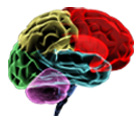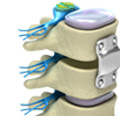Brain Surgery
 Brain surgery is perhaps the most delicate of all the surgeries which are performed on the human body.
Brain surgery is perhaps the most delicate of all the surgeries which are performed on the human body.
It treats brain diseases by making small openings in the skull and treating the diseased area. In recent years, brain surgery has become remarkably safe and effective, thanks to the addition of various new technologies in its execution.
Modern top-end neurosurgical microscopes have made the deeper brain structures easier to visualize. It has also reduced the amount of brain to be removed/sliced through for approaching the important and deeper brain structures and has evolved the field of keyhole brain surgery.
Computer-guided systems like neuro-navigation and stereotaxy have made surgery extremely precise and less morbid. Intra-operative MRI and CT scans have made life easier for the neurosurgeons when they operate on important brain structures.
Brain Surgery: condition & treatments
Hemifacial spasm is a neuro-muscular disorder that causes a twitching of the facial muscles on one side of the face. Read More »
Trigeminal neuralgia is a very painful condition causing severe misery and desperation in the lives of the sufferers. Read More »
According to Dr. Peter Jennetta and his team, who did a great work in MVD surgery field in the last century, the efficacy of surgery is higher when done EARLY in the course of the disease. Read More »
With the rapid advances in neurosurgery, brain tumours have become increasingly more treatable.
Early diagnosis and high degree of suspicion are the key elements for aiming a cure. Read More »
Spine Surgery
 The bony spine is a complex organ starting form the cranio-vertebral junction, up to the coccyx. It houses the most delicate ‘Electrical Cable’- the spinal cord and the nerve roots. The spinal cord is the direct continuation of brain and is in constant feedback mode with it. Spinal problems are actually the cry of the nerves being pressed upon or stretched, by bony or other abnormalities.
The bony spine is a complex organ starting form the cranio-vertebral junction, up to the coccyx. It houses the most delicate ‘Electrical Cable’- the spinal cord and the nerve roots. The spinal cord is the direct continuation of brain and is in constant feedback mode with it. Spinal problems are actually the cry of the nerves being pressed upon or stretched, by bony or other abnormalities.
Hence a neurosurgeon is involved in treating them! Diseases of the spine & spinal cord are innumerable & require specialized neurosurgical techniques to preserve the neural functions. Handling of the nervous tissues requires neurosurgical training & expertise. Neurosurgeons are amongst the best doctors who have undergone long years of training and are amly qualified to treat compressions on the nerve & spinal cord, remove intramedullary & intradural tumours without damaging the cord or the roots, to treat cervical, thoracic & lumbar spondylosis, to treat the disc herniation with minimally invasive & effective method, to treat injuries to the spine, to perform complex spinal instrumental fixation and to perform procedures like vertebroplasty etc.
Who is a spine surgeon ?
There is no degree/ diploma in India which gives a title of ‘Spine Surgeon’. However spine surgery is intergral part of neurosurgery training as Superspeciality training, in fact it constitutes 70% of the training time in Neurosurgery.The term “spine surgeon” is rather loosely used in modern medicine.
In the present scenario, anybody who is dealing with spine diseases is called a Spine Surgeon.
By this definition, a Neurosurgeon is a ‘Spine Surgeon’ in an even more comprehensive sense as he not only treats the bony & disc lesions but quite routinely opens the dura, removes intramedullary lesions and is an expert in the complex Cranio-vertebral junction surgery where there is a compression on the lower medulla & pons. The neurosurgeon is very well equipped to treat the spinal cord injury as the injured spinal cord behaves in a similar fashion to injured brain tissue.
The principles of neural rehabilitation are also similar for the brain & the spinal cord.
The world apex body of Neurosurgery – ‘The American Association of Neurological surgeons’ (AANS) says in its website.
“Thus, Neurosurgeon all over the world spend 70% of their time treating spine diseases –Starting form their residency days to their practicing career.
It is our endeavour to educate public about these facts and to guide them properly in the problems comprising the spine& spinal cord.”
- Services offered in a Neurospine program
- Diagnosis & treatment of neck & back pain.
- Herniated lumbar, thoracic & cervical discs.
- Cervical spondylotic myelopathy & radiculopathy.
- Cranio-vertebral junction problems like basilar imagination & atlanto-axial dislocation.
- Koch’s spine.
vertebral body collapse ( vertebroplasty) - Some techniques in pain management
- Radiofrequency for some vertebral tumours and pain relief.
- Extradural , Intradural & Intramedullary spinal tumours.
- Intraspinal Anterio-venous malformation
- Complex spinal fixations for kyphosis & scoliosis.
- Spondylolisthesis. ( PLIF & ALIF)
Spine Surgery: condition & treatments
Postero-lateral (Percutaneous) Endoscopic Lumbar Discectomy (PELD) and Foraminoplasty (PELF) Read More »
They are mere technical aids, and not substitutes for correct patient examination, selection and surgical expertise. Read More »
Microlumbar Discectomy (Known as “MLD”) is the gold standard technique in removing the slipped disc with minimal access. The procedure is described shorly here. Read More »
